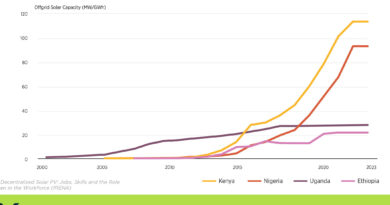Kenya now turns to bioethanol from sugarcane and cassava for cooking

The Kenyan government is targeting to increase local production of bioethanol from sugarcane and cassava to increase its use for cooking.
The two are some of the most widely grown crops in some parts of the country especiaally in Western Kenya.
The push by the Ministry comes at a time when a growing number of households in Kenya are already switching to the use of bioethanol for cooking in the form of gel and liquid.
This energy source is emerging as a complementary fuel to Liquefied Petroleum Gas (LPG) as it is cheaper and cleaner than other sources such as kerosene and charcoal.
According to the Ministry of Energy and Petroleum, the government has recognized the potential of co-generation from sugarcane and bioethanol production from sugarcane and cassava as primary source of bioenergy contribution to renewable energy sources.
Bioethanol is currently exclusively produced using molasses feedstock, a by-product of sugar production. Two companies produce the product locally: Kisumu
Molasses Plant and the Agro Chemical and Food Company. Mumias Sugar Company used to be a major producer of bioethanlo before the factory was closed down more than 5 years ago.
This will contribute to achieving universal access to clean cooking by 2028 and a 100% renewable energy electricity supply by 2030
ministry of energy
The State Department for Energy together with the technical committee members from other State Departments has planned for a Sugar and Cassava Industry Cogeneration and Bioethanol Conference under the theme “Revitalizing cogeneration and bioethanol production for a greener future”.
The conference aims to bring together sugar/cassava industry players and electricity sector players to forge common ground on revitalizing cogeneration and bioethanol production for improved energy security, reduced carbon emission and improved business environment.
KOKO Network, a private company, had by 2020 successfully enabled 65,000 households to use bioethanol, through 600 agents and 700 outlets around Nairobi, validating the viability of the product as an alternative energy source.
The use of bio energies such as bioethanol is one of the strategies that Kenya is using to undertake the transition to clean cooking.
The government is currently implementing the Bioenergy Strategy 2020 – 2027.
Different forms of bioenergy include
- solid biomass such as fuelwood, charcoal and agro-industrial solid wastes—including pellets and briquettes
- (ii) liquid biofuels such as bioethanol and biodiesel, and
- (iii) gaseous biofuels such as biogas, biomethane and syngas
info@theenergyreview.com
Discover more from THE ENERGY REVIEW
Subscribe to get the latest posts sent to your email.


